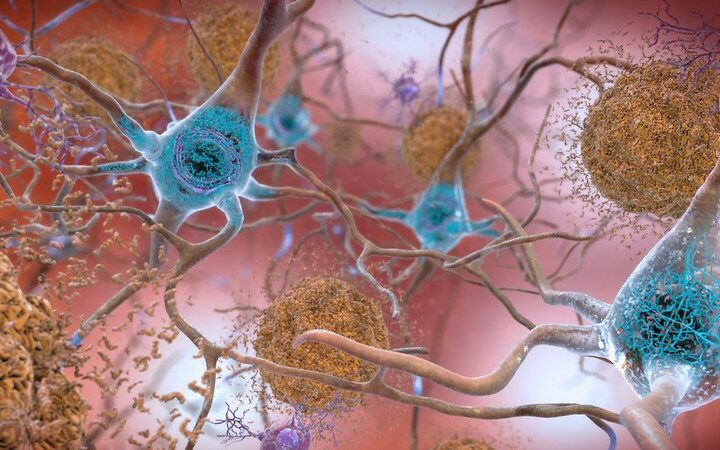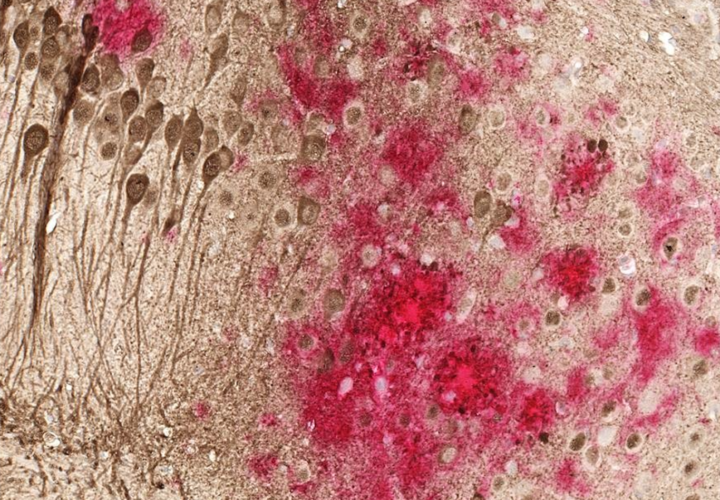The CEO of drug company AC Immune shared her thoughts on a recent failed tau vaccine trial, lessons learned, and what comes next.
The Alzheimer’s research community has been working for decades to find an effective treatment for Alzheimer’s disease, largely by targeting one of the hallmarks of the disease: the clumps of beta-amyloid proteins often found in the brains of people with dementia. But, despite decades spent on developing anti-amyloid drugs, the approach has yet to yield an approved therapy to slow or reverse the neurodegenerative effects of Alzheimer’s. Amid the long lines of setbacks in drug development, Biogen’s aducanumab is ahead of the pack as it awaits approval by the FDA. But, the effectiveness of the anti-amyloid drug remains hotly contested.
With little payoff from the approach of relying on beta-amyloid as the key Alzheimer’s drug target, scientists are beginning to suspect that a multifaceted approach may be needed. Accordingly, they are now diversifying their research. Some have honed in on tau tangles, toxic proteins long thought to be another culprit of the disease.
In the summer of 2020, Swiss biopharma company AC Immune’s candidate Alzheimer’s vaccine, ACI-35.030, which targets tau, yielded “encouraging” safety results in the TAURIEL study’s early trials. But in September, Phase 2 showed that the vaccine failed to meet its primary efficacy endpoints. In other words, compared to a placebo, it didn’t have a notable impact on Alzheimer’s symptoms like cognitive decline.
Following the trial, Technology Networks spoke with AC Immune CEO, Andrea Pfeifer, about what lies ahead for this tau vaccine effort and what the company learned from the trial. In that full interview by writer Ruairi Mackenzie, here are some of the things Pfeifer shared about the pros and cons of beta-amyloid and tau as drug targets, and what will come next for the company’s experimental vaccine.
On the challenges of beta-amyloid and tau as drug targets:
Andrea Pfeifer: The treatment windows when you can actually treat beta-amyloid or tau are supposedly very different. In fact, the window for therapy of beta-amyloid alone is probably the prevention stage in very early Alzheimer’s. The window where tau plays a role is probably from very early or even preclinical Alzheimer’s to a very late stage.
Tau actually starts in the cells, in contrast to beta-amyloid, which is an extracellular protein. The very first step in pathology happens in the neuron. Then you have this aggregated tau that can leave the neurons and migrate from one neuron to another neuron in an almost viral-like process. This is really how this disease gets spread.
On looking to tau pathology to see a clear correlation between biomarker and clinical outcome in neurodegeneration:
Pfeifer: What we recently learned is that the tau pathology is not just starting when you see a signal in the brain by tau [PET scan], which is normally linked to the symptomatic onset of the disease. The work of Oskar Hansson, which got a lot of recognition earlier this year, showed that soluble tau, in the plasma and cerebrospinal fluid, can be detected ten to twenty years before even symptoms start and before you have this tau PET signal inside the brain.
What this means is that intervention — meaning early-stage symptomatic Alzheimer’s treatment — might actually move to the prevention stage, because it would allow you — and this is incredibly important — to use the biomarker to identify people at risk … These new plasma biomarkers would allow us to identify Alzheimer’s in a normal routine exam in the doctor’s practice. We could see if these tau biomarkers are there in a certain range and this would allow you to preventively vaccinate people, so they don’t get the disease.
This would not treat but prevent Alzheimer’s, and honestly, it would be more important than HIV treatment or oncology treatment in terms of impact on society.
On why, despite that so many past vaccines for Alzheimer’s have failed, AC Immune is staying the course:
Pfeifer: I think one reason why so many studies failed was that they did not have the right diagnostic tools. It’s absolutely unimaginable today to start an Alzheimer’s study and not pre-screen the patients for the presence of beta-amyloid. The first studies, for example the solanezumab studies, did not have this inclusion criteria. It was not because the researchers didn’t know they should do this — these tools were simply not available.
The big advantage we have with tau is that the therapeutic tools and the diagnostic tools have become available, so we have already tau imaging to do a better clinical trial.
“It is unlikely that a silver bullet for Alzheimer’s
will exist in the form of a therapy
that targets one protein.”
It’s very simple. The earlier you diagnose, the less neuronal loss you have and the easier it is to re-establish the function of the brain. This is why I’m so excited about this new data tracking phospho-tau-217 before symptoms arise, because this is potentially when all the neurons are still there. It should allow us to really prevent the onset of the disease.
On the AC Immune vaccine’s failed Phase 2 trial:
Pfeifer: The science shows that tau pathology progresses in a spatiotemporal pattern that is correlated with cognitive decline, so we are both surprised and disappointed by the top line results of the trial and look forward to the detailed data.
This is the world’s first-ever Phase 2 anti-tau antibody data readout in Alzheimer’s disease, and the full data, including biomarker results, must now be closely analyzed and will be crucial in bringing meaning to the field.
The second Phase 2 (LAURIET) study of semorinemab in moderate AD is ongoing.
On finding a “silver bullet” cure for Alzheimer’s:
Pfeifer: AC Immune has a number of approaches to tackling neurodegenerative diseases. It is unlikely that a silver bullet for Alzheimer’s will exist in the form of a therapy that targets one protein. It’s more probable that a combination therapy with multiple points of intervention will be necessary to cure the disease.
There is an increasing recognition that precision medicine and early diagnosis will be required to identify which proteins are causing the disease and to effectively deliver the appropriate combination therapies.
Read Technology Networks’ full interview here.



